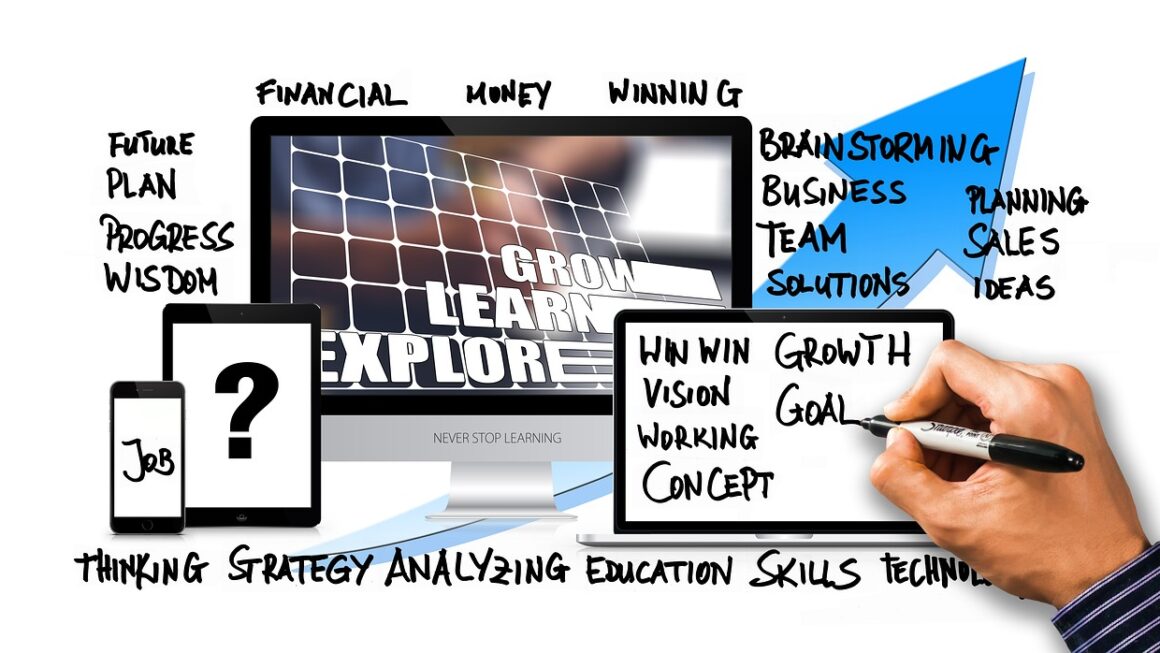In today’s fast-paced world, finding moments of calm and focus can feel like a distant dream. Thankfully, the burgeoning field of mindfulness tech offers a range of tools and applications designed to help us cultivate inner peace and enhance our mental well-being. From meditation apps to wearable sensors, technology is increasingly being used to support our journey toward mindfulness. Let’s explore the innovative landscape of mindfulness tech and discover how it can benefit your life.
Understanding Mindfulness Tech
Mindfulness tech encompasses a wide array of digital tools designed to promote mindfulness practices. These technologies aim to make mindfulness more accessible, engaging, and trackable. Ultimately, they help individuals integrate mindfulness into their daily routines, fostering greater self-awareness and reducing stress.
What is Mindfulness?
- Mindfulness is the practice of paying attention to the present moment without judgment.
- It involves focusing on your thoughts, feelings, bodily sensations, and surrounding environment with openness and acceptance.
- Regular mindfulness practice can lead to reduced stress, improved focus, and greater emotional regulation.
- It can be practiced anywhere, anytime with or without the use of technology.
Types of Mindfulness Tech
Mindfulness tech comes in various forms, including:
- Meditation Apps: Guided meditations, breathing exercises, and sleep stories delivered via mobile apps. (Examples: Calm, Headspace, Insight Timer)
- Wearable Sensors: Devices that track physiological data (heart rate variability, skin conductance) to provide insights into stress levels and guide relaxation techniques. (Examples: Muse, Spire)
- Biofeedback Devices: Technology that provides real-time feedback on bodily functions to help users learn to control them consciously. (Example: HeartMath)
- Virtual Reality (VR) Mindfulness: Immersive VR experiences designed to create calming and meditative environments.
- Smart Home Integration: Using smart home devices (lights, sounds) to create a mindful atmosphere.
The Benefits of Using Mindfulness Tech
Integrating mindfulness tech into your routine can yield a multitude of benefits for both your mental and physical health.
Reduced Stress and Anxiety
- Guided Meditations: Apps like Headspace offer guided meditations specifically designed to reduce stress and anxiety. Studies have shown that regular meditation can lower cortisol levels, the hormone associated with stress.
- Real-time Feedback: Wearable sensors provide immediate feedback on your stress levels, enabling you to take proactive steps to calm down, such as practicing deep breathing exercises.
Improved Focus and Concentration
- Mindfulness Games: Some apps offer gamified mindfulness exercises to help improve attention span and focus. These games can make mindfulness practice more engaging and enjoyable.
- Focused Breathing Exercises: Techniques like box breathing (inhale for 4 seconds, hold for 4 seconds, exhale for 4 seconds, hold for 4 seconds) can be guided through apps or monitored by wearable devices. This brings awareness to the breath and anchors you in the present, reducing mental clutter.
Enhanced Sleep Quality
- Sleep Stories: Apps such as Calm provide narrated stories and ambient sounds to help you fall asleep faster and experience more restful sleep.
- Sleep Tracking: Many wearables also track sleep patterns, providing insights into sleep quality and offering personalized recommendations for improvement. This data-driven approach can help you identify and address factors affecting your sleep.
Increased Self-Awareness
- Mood Tracking: Several mindfulness apps allow you to track your mood throughout the day and identify patterns and triggers.
- Journaling Prompts: Apps can provide journaling prompts to encourage self-reflection and deeper understanding of your thoughts and emotions. This process can lead to greater self-awareness and emotional regulation.
Choosing the Right Mindfulness Tech for You
With the myriad of options available, selecting the right mindfulness tech can seem daunting. Here are some factors to consider:
Assess Your Needs and Goals
- Stress Reduction: If your primary goal is stress reduction, consider meditation apps or wearable sensors that track stress levels.
- Improved Sleep: If you struggle with sleep, explore apps with sleep stories, ambient sounds, and sleep tracking features.
- Enhanced Focus: For better focus, look for apps that offer mindfulness games and focused breathing exercises.
- Overall Well-being: If you’re looking for a comprehensive approach, consider a combination of apps and wearables that provide a range of features.
Consider Your Lifestyle and Preferences
- Time Commitment: How much time are you willing to dedicate to mindfulness practice each day? Choose apps with shorter sessions if you have limited time.
- Budget: Mindfulness tech ranges from free apps with basic features to premium subscriptions and expensive wearable devices. Determine your budget beforehand.
- Tech Savviness: Are you comfortable using technology? Opt for user-friendly apps and devices if you’re new to mindfulness tech.
- Personal Preferences: Do you prefer guided meditations, nature sounds, or music? Explore different apps and features to find what resonates with you.
Read Reviews and Try Free Trials
- Before committing to a paid subscription or device, read reviews from other users and try free trials (if available). This will help you get a sense of the app’s features, usability, and effectiveness.
Integrating Mindfulness Tech into Your Daily Routine
Consistency is key to experiencing the full benefits of mindfulness. Here are some tips for seamlessly integrating mindfulness tech into your daily routine:
Start Small and Be Consistent
- Begin with just 5-10 minutes of mindfulness practice each day and gradually increase the duration as you become more comfortable.
- Set a specific time each day for your mindfulness practice and stick to it as much as possible.
Create a Dedicated Space
- Designate a quiet and comfortable space in your home for your mindfulness practice. This could be a corner of your bedroom, a cozy chair, or even your backyard.
- Minimize distractions by turning off your phone, closing the door, and informing others that you need some quiet time.
Combine with Other Healthy Habits
- Pair your mindfulness practice with other healthy habits, such as exercise, healthy eating, and spending time in nature.
- These habits can complement and enhance the benefits of mindfulness.
Track Your Progress and Adjust as Needed
- Use the tracking features of your mindfulness app or wearable device to monitor your progress and identify areas for improvement.
- Be patient with yourself and adjust your practice as needed to stay motivated and engaged.
Conclusion
Mindfulness tech provides valuable tools to cultivate presence, reduce stress, and enhance overall well-being in our increasingly demanding lives. By understanding the various types of mindfulness tech available, assessing your individual needs, and integrating these tools into your daily routine, you can unlock the transformative power of mindfulness. Embrace technology as a partner on your journey toward a more peaceful and focused life.




